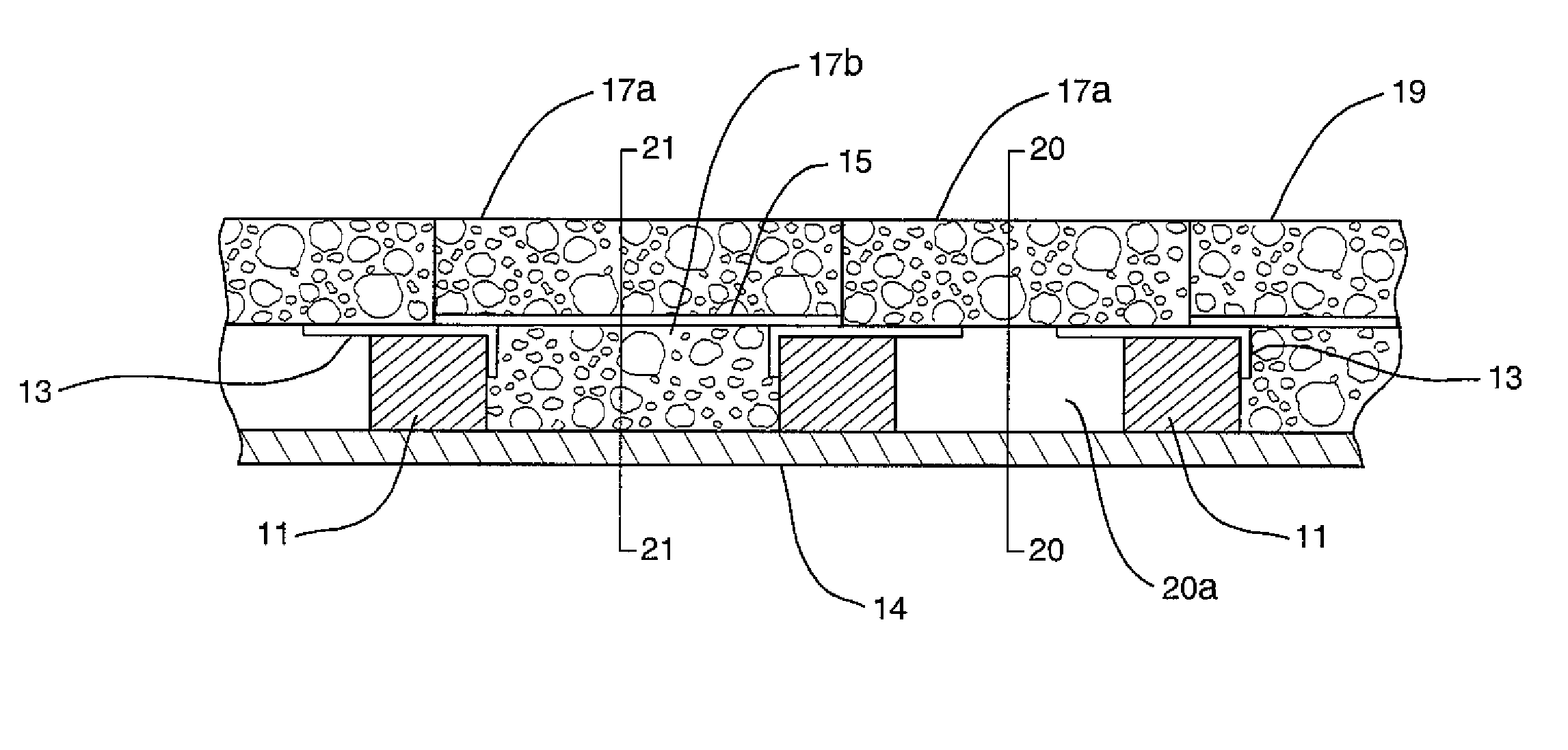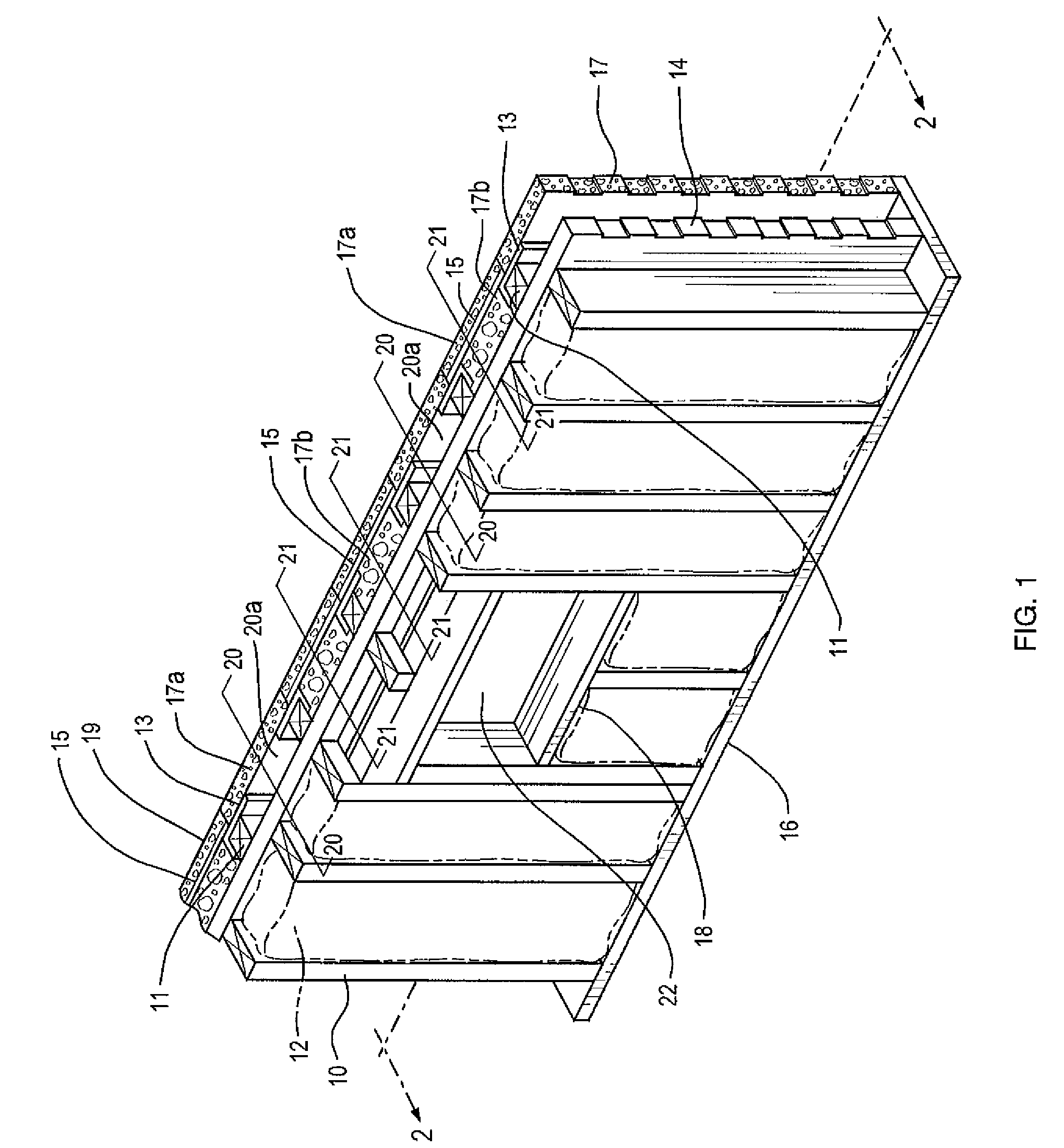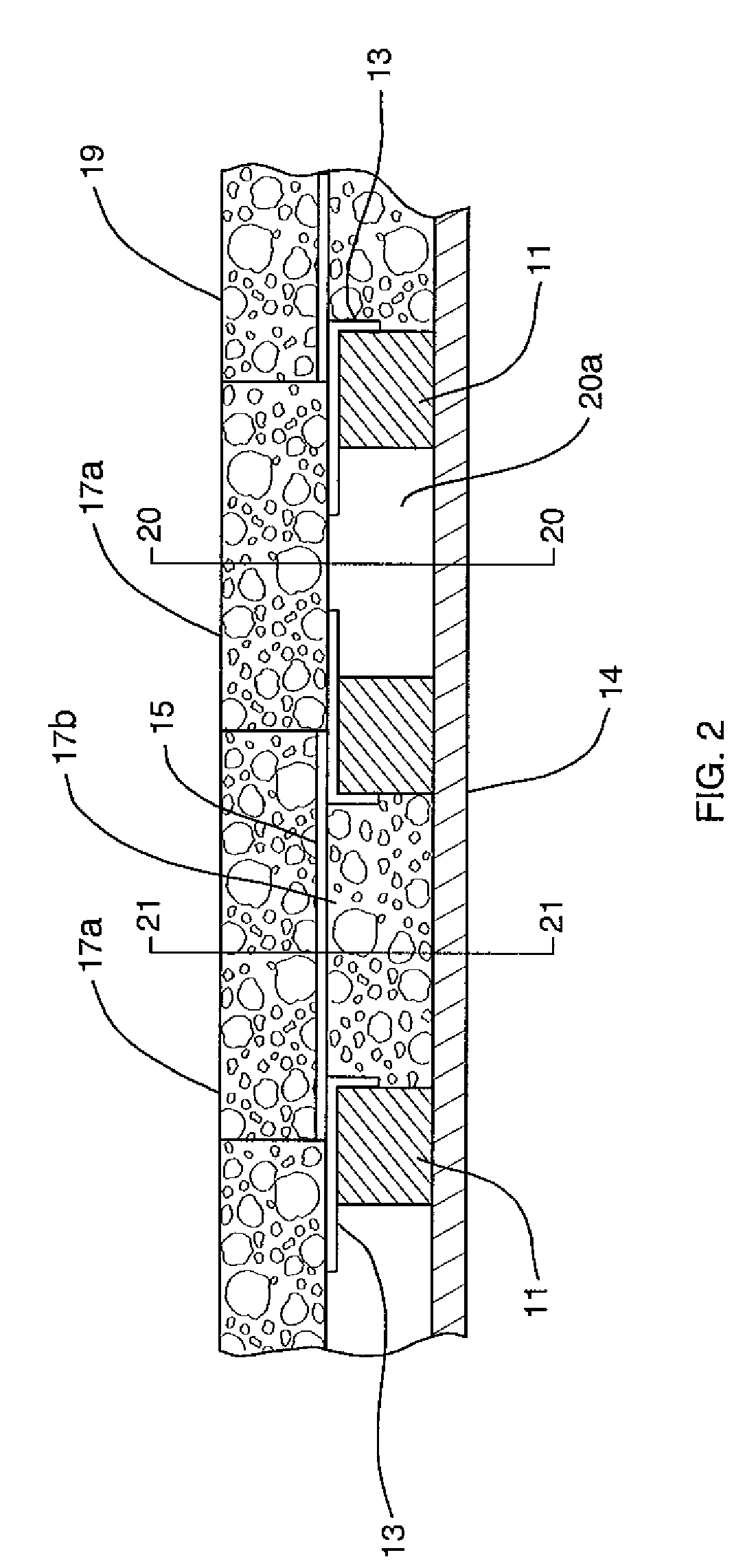Energy conserving active thermal insulation
a passive insulation and energy saving technology, applied in the field of active thermal insulation, can solve the problems of cumbersome phase change material and containment, inability to disclose the treatment of an external wall with structural openings, and inherently unrestricted ceilings beneath the attic space for additional passive insulation, etc., to achieve the effect of improving the thermal resistance r of the building structure, and reducing the risk of leakag
- Summary
- Abstract
- Description
- Claims
- Application Information
AI Technical Summary
Benefits of technology
Problems solved by technology
Method used
Image
Examples
Embodiment Construction
[0036]FIG. 1 shows a partial isometric view of an active insulation structure of the present invention. The active insulation structure establishes one or more air channels 20 and one or more thermally conductive ply channels 21. As shown in the representative illustration of FIG. 1, the active insulation structure is shown installed upon the exterior surface of the exterior sheeting 14 forming part of a building structure to be insulated, with the air channels 20 located outside of and adjacent to both sides of a window opening 22. The window opening 22 is formed between wall studs 10 and transverse studs 18. The exterior sheeting 14 is fastened to the wall studs 10 and a base plate 16 of the structure to be insulated. The air channel 20 extends from the base to the top of the wall in areas of the structure where the airflow is not obstructed by windows and / or other openings. The air channel 20 is formed between first layer of insulation 17a, preferably a low-density foam but not l...
PUM
 Login to View More
Login to View More Abstract
Description
Claims
Application Information
 Login to View More
Login to View More - R&D
- Intellectual Property
- Life Sciences
- Materials
- Tech Scout
- Unparalleled Data Quality
- Higher Quality Content
- 60% Fewer Hallucinations
Browse by: Latest US Patents, China's latest patents, Technical Efficacy Thesaurus, Application Domain, Technology Topic, Popular Technical Reports.
© 2025 PatSnap. All rights reserved.Legal|Privacy policy|Modern Slavery Act Transparency Statement|Sitemap|About US| Contact US: help@patsnap.com



